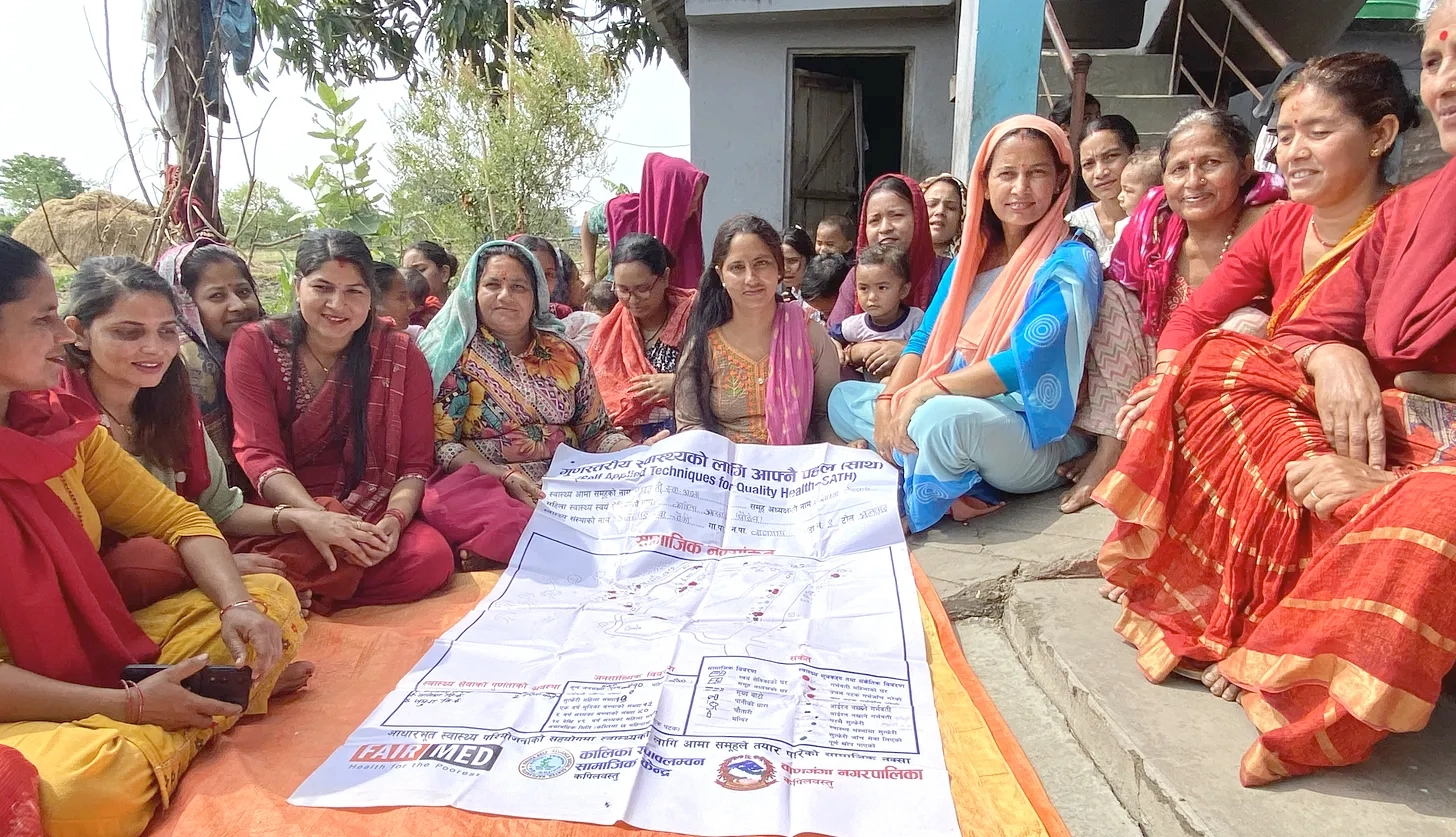Target 2030 for maternal and newborn health in Nepal

This article was first published in Nepali Times online on 5 July 2025. A slightly shorter version was published in the print version of 4 July 2025.
Turn off the hectic East-West Highway at Chandrauta, bump up a short dirt road, and you reach the equally busy Basic Health Services Hospital in Shivraj Municipality, Kapilvastu District. Small groups of people gather around its two single-storey buildings — some line up, others fan themselves in the morning heat.
To the left is a new, smaller building. The main room is unfinished and boxes of supplies are scattered on the floor, but other areas are being used. At one end, a pharmacist sits at a window serving a line of people outside. In an office at the other end, a nurse at a desk talks to a pregnant woman during a pre-delivery (antenatal care, or ANC) visit.
“This Smart Integrated Clinic will be a one-stop shop for mother and child healthcare,” says Hospital Director Birendra Kumar Mishra. Financed by the municipality and equipped by UNICEF, the clinic will focus on vaccinating children in the hospital’s catchment area of nearly 100,000 people.
To date only about 70% of kids in the area get vaccinated due to low awareness or hesitation among locals, or because many born at the hospital are from families who live elsewhere.
“Many families from outside can’t afford to wait until the next vaccination day; the Smart Clinic will offer inoculations daily so they won’t have to,” says Mishra, sitting in his office with the ceiling fan whirring. Its records will be linked to a Government of Nepal information system, so if a mother or child misses an appointment they can be traced and contacted, he adds.
In an email, UNICEF credits proactive local leaders and a strong willingness to invest in innovation for the Smart Clinic, which is soon supposed to start delivering other services like nutritional counselling by female community health volunteers (FCHVs).
But like much of maternal and newborn health (MNH) in Kapilvastu, in Lumbini Province, and across Nepal, news at the Basic Hospital is not all positive.
About a month later in the same office, Dr Amit Pandey is explaining the recent death of a pregnant woman. Close to her delivery date, she arrived at the hospital with high blood pressure (known as pre-eclampsia) and severe anaemia.
Doctors referred her to the provincial hospital in Butwal, but her family took her home instead. Eight days later she returned, unconscious. Again, doctors referred her to Butwal but the family again returned home.
The next day she hadn’t improved so the family decided to follow the doctors’ advice but the woman, a mother of three, died on the way to the facility. “They are very poor,” said Pandey. “We referred the case but they didn’t want to go to a higher centre — they were worried about the cost. We even offered them a free ambulance but they didn’t take it.”
Ironically, two days earlier the Director of the Lumbini Province Health Directorate singled out the referral system as a weakness in the province’s healthcare.
“Our referral mechanisms are very poor,” said Roshan Lal Chaudhary in an interview in Taulihawa. “For example, we lack facilities in Kapilvastu, so from Kapilvastu Hospital a referral would be made to Butwal. We prepare the papers, but they don’t go. Sometimes it’s a financial issue. It could also be because they lack confidence speaking or they don’t know anyone there.”
Asked if Lumbini Province will meet the 2030 target for maternal mortality in the United Nations Sustainable Development Goals (SDGs), “it will be difficult,” said Chaudhary.
